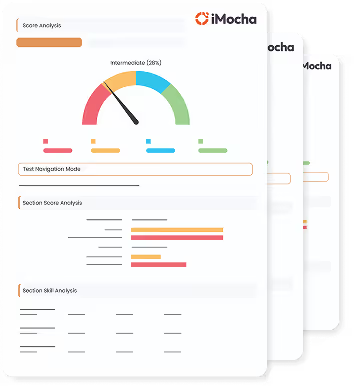


Choose easy, medium, or tricky questions from our skill libraries to assess candidates of different experience levels.
Choose easy, medium, or tricky questions from our skill libraries to assess candidates of different experience levels.

Choose easy, medium, or tricky questions from our skill libraries to assess candidates of different experience levels.

Choose easy, medium, or tricky questions from our skill libraries to assess candidates of different experience levels.
This a comprehensive PDF report, which you can instantly download and share with your hiring team or candidates for seamless collaboration.
Download Sample Report



iMocha's visual reasoning test is the preferred pre-employment test for recruiters and hiring managers to hire job-fit candidates for roles such as Graphic Designers, Computer Programmers, Air Traffic Controllers, Advertising Executives, Computer Programmers, System Analysts, and System Designers. Our online visual reasoning test reduces hiring time by 45% and increases the interview-to-selection ratio by 62%.





%20(1).webp)
Visual reasoning is the process of analyzing visual information and being able to solve problems based on it. A person's visual reasoning abilities are related to overall intelligence.
It is a component of nonverbal intelligence, meaning that a person does not have to use language in order to solve visual problems. It measures fluid intelligence, which is your ability to quickly identify patterns, logical rules, and trends in new data, identify causes, integrate this information, and apply it to solve problems.

These questions may require the test taker to identify and manipulate visual patterns. They show a set of shapes and ask the test taker to identify what shapes should come next in the pattern. For example, identifying relationships, similarities, and differences between shapes and patterns, recognizing visual sequences and relationships between objects, and remembering these.
Diagrammatic reasoning is used where the ability to cope with complexity and deal with novelty is required rather than relying on previous experience.
This test indicates if the candidate is:
This visual reasoning test may contain MCQs (Multiple Choice Questions), MAQs (Multiple Answer Questions), Fill in the Blanks, Whiteboard Questions, Audio/Video Questions, Job-based Simulations, True or False Questions, etc.







.webp)
.webp)
.webp)
.webp)